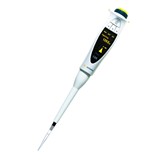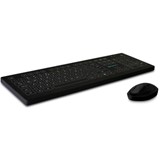With the introduction of electronic health records (EHRs) and patient portals, the medical practice environment has rapidly changed. A recent study in US physicians, published in Mayo Clinic Proceedings, showed that in 2008 only 15% of practices used EHRs. In 2012, this grew to 72%. The Australian Government has implemented e-health records, which, according to ITNews, majority of practices have reluctantly taken on board.
It appears this reluctance is highly warranted. Because despite the fact that EHRs are designed to make it easier, the fact of the matter is, many physicians state there are several obstacles in using EHRs, including increased clerical time and burden.
The study published in Mayo Clinic Proceedings, looked at the pressures facing US based physicians in regard to the electronic environment, clerical burden and rates of burnout. For Australian physicians and medical practices, there are some very valuable lessons and takeaways from this study.
The Physicians Study
According to the study, out of 6375 physicians in active medical practice, 82.5 to 84.5% said they used "electronic health records (EHRs), computerized physician order entry (CPOE), and electronic patient portals."
Majority of these physicians were in private practice, working an average 40-69 hours per week.
What the study found was that physicians using these technologies had a lower job satisfaction rate, feeling as though they spent way too much time on clerical tasks, and as a result they were at much higher risk of professional burnout.
- 7% indicated a high score for emotional exhaustion
- 2% indicated a high score for depersonalization
- 4% indicated a low score for personal accomplishment
- 3% indicated they were burned out
After two physician suicides in New York in 2015, The Conversation reported that 20-60% of physicians are experiencing burnout.
In 2013, Beyondblue ran a survey in Australian doctors and discovered:
- 4% of doctors are experiencing very high psychological distress
- More than a quarter of doctors are likely to experience depression and anxiety
Another study in BioMedCentral identified that even junior physicians in Australia undergo stress and burnout, one of the reasons being the increased workload, which does include a variety of factors, one of them being the added burden of the electronic environment.
Digital Technologies in Medical Practice
The rise of digital technologies has brought about positive developments. For example, the rise in telemedicine has many benefits for patients including, improved access, closer care, improved outcomes, better quality of life, earlier detection of issues, and reduction of risk factors. And on a public health level, telemedicine brings substantial cost savings to many services.
As a business, medical practices and physicians can also leverage digital technologies to their advantage, using it to drive their business forward and engage the patient in their own health journey on a deeper level.
But at the same time, these great advantages can result in unforeseen pressures.
Some of which are:
- Information overload
- Lack of time
- Frequent interruptions and distractions
- Altered patient-physician communications
- Increased clerical and cognitive burden
- Change in communications within the work environment
- Reduced perceptions of meaningful work by shifting the focus from patient to computer
As humans, we don’t necessarily adapt at the rate at which "progress" is occurring. It’s also interesting, because while we speculate that technology will improve patient outcomes and reduce costs, at this stage, being early on, there is no conclusive evidence to prove this.
In the Mayo Clinic Proceedings study, only 26.4% of physicians agreed that the EHRs have improved patient care, while 41% disagreed that it’s had any advantages. And 62.5% said that EHRs had greatly decreased their efficiency.
The reality is that in most cases, physicians are responsible for entering a lot of the data themselves (61.6%). Some using voice recognition software (14.5%) some using transcription services (14.5%).
When it came to communicating directly with the patient through the patient portal, efficiency was, again, a major issue. And the physicians were unable to establish if there were any improvements to patient outcomes at all.
So it appears that clerical work has greatly increased for medical professionals. And overall, the research shows this leads to a 30% greater risk of professional burnout.
Clearly this is not a positive outcome. And on a practical level, the fact that the attitudes and mental capacity of physicians are greatly affected under these conditions could have a flow on effect for patient outcomes too, including:
- Lower quality of care
- Increased risk of medical errors
- Reduced clinical hours due to depression and anxiety
At this stage, the way forward is not clear. But the study indicates that to decrease the burden, physicians may need to employ a nurse or medical assistant to manage aspects such as "visit note documentation, non physician order entry, inbox management, health coaching, and care coordination."











